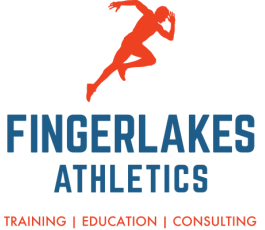|
The American College of Sports Medicine (ACSM) recently released a consensus statement on injury prevention geared to the team physician. Their conclusions, however, are beneficial for coaches, athletes, parents and other health care professionals to be aware of. In the statement, the authors focus on ankle, patella femoral syndrome, ACL, shoulder, elbow, head and neck injuries in high school and college athletes. They also touch upon sudden cardiac death, heat illness and skin infections. The article systematically addresses the mechanisms of injury and injury reduction strategies of each injury. I will include a brief summary with action items of the statement and refer those interested to the complete article.
Ankle: Ankle sprains have a high risk of repeat injury and are the most commonly suffered injury in athletics. Key prevention strategies include balance training, neuromuscular training to include jumping, landing and cutting exercises and technical training. Once an ankle is injured, bracing is an effective way to provide support while the athlete is performing rehabilitation. ACL: Although not a very common injury, it does account for significant time lost from activity and long term joint health. In High School the sport with greatest risk of injury is football and in College it is Women’s soccer with females being at increased risk of injury in general over their male counterparts. Adopting an injury prevention program that addresses strength, core strength, neuromuscular control, cutting, jumping and landing can effectively reduce the risk of injury. Bracing is not an effective means of reducing injury risk. Patellofemoral pain: Patellofemoral pain is characterized as pain around the front of the knee.Contributing factors include muscle weakness, previous injury, training error and improper movement patterns. Injury prevention techniques include assessing and training for proper jumping and landing form and implementing a structured training program to minimize muscle imbalances with an emphasis on quadriceps, hamstring and hip abductor strengthening. Shoulder pain: The ‘disabled throwing shoulder’ is a term to describe pain and dysfunction with overhead sports. Risk factors are muscle imbalances, previous injury and training error. Prevention is focused on following recommended pitch counts, optimizing form for throwing and serving, balancing activity with rest and strengthening the upper body to correct any imbalances in the shoulder, arm, and scapula. Elbow injury: There are no injury prevention programs developed for reducing elbow injury in throwing athletes. The main focus currently is on monitoring fatigue, incorporating adequate rest periods, monitoring total throwing volume to reduce overload, not throwing too many months out of the year and undertaking a general strength program to improve strength and reduce any imbalances. Sudden cardiac death: Luckily, this is a rare phenomenon and occurs for several different reasons, including genetics. From a prevention standpoint it is important that all athletes have a physical to determine their risk factors and follow up testing as indicated by their doctors. All athletic sites and sports should have a written and communicated emergency action plan in the event of a catastrophic injury. Access to an AED is essential, and one should be close by to provide care to a fallen individual within 3 minutes of collapse. Chest protectors do not prevent death from sudden impact (commotio cortis) but using a softer ball in youth sports might. It is also not recommended that athletes step in front of a shot due to risk of having a commotio cortis event. Exertional heat illness: The main risk factor for exertional heat illness is environmental and those that have a previous injury and some heritable traits such as sickle cell. The main prevention strategy is acclimatization. Ideally, athletes prepare for the environmental conditions that they will be playing in. Coaches can monitor and modify practice and equipment needs depending on the weather. In preparation for weather, athletes can pre hydrate and stay hydrated during activity and monitory weight loss between practice sessions. Having an emergency action plan in place in case of emergency is essential to management of heat illness. Skin infections: College wrestling has the greatest incidence of skin infections. Other risk factors include previous skin infection, reduced immune function, body shaving, facility cleanliness and sharing personal care items. Some general rules are important for reducing risk of skin infections and include good hygiene, immediately laundering of uniforms and practice garments, facility cleaning, not sharing equipment or care items and promptly reporting any wounds or lesion to the team athletic trainer or your physician. Conclusion: While this statement is geared for the team physician, the information is very valuable for those working in athletics to understand and implement.
Reference: Special Communications. (2016). Selected issues in injury and illness prevention and the team physician: a consensus statement. Medicine and Science in Sports and Exercise, 48 (1). http://journals.lww.com/acsm-msse/Fulltext/2016/01000/Selected_Issues_in_Injury_and_Illness_Prevention.21.aspx
0 Comments
Leave a Reply. |
AuthorI write on sport management, fitness, sports medicine and business topics to help you reach your goals Archives
February 2024
Categories
All
|
|
Home
About Contact |
To learn more about what services we offer, to schedule an appointment or to get prices please contact me at
[email protected] (607)279-6791 *This site is for educational purposes only, it is not meant to diagnose, treat or replace medical advice. Before starting an exercise program always make sure that you are healthy and able to do so safely.* |


 RSS Feed
RSS Feed